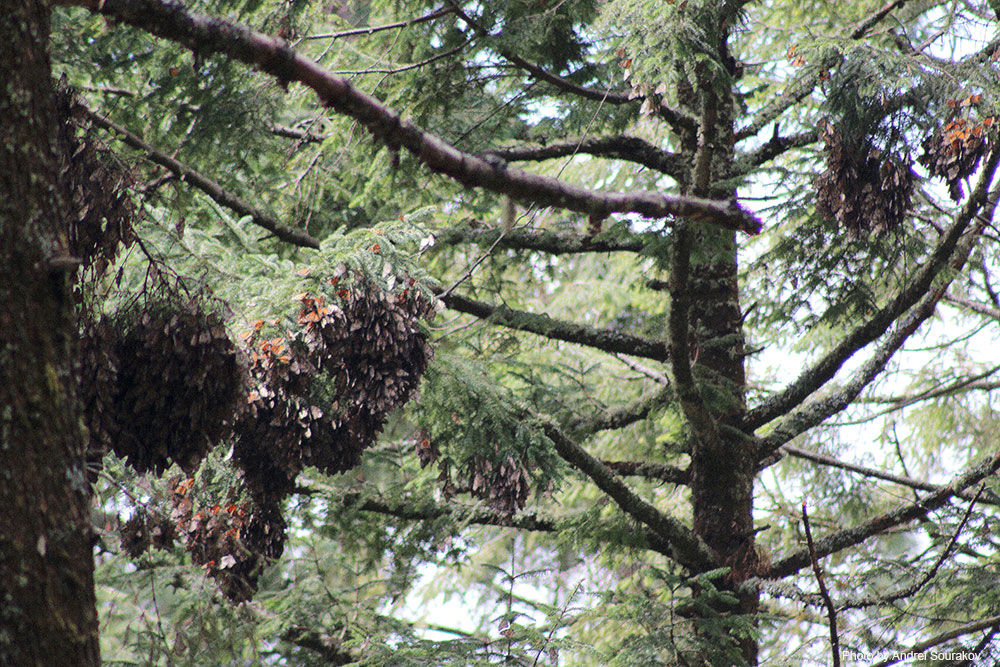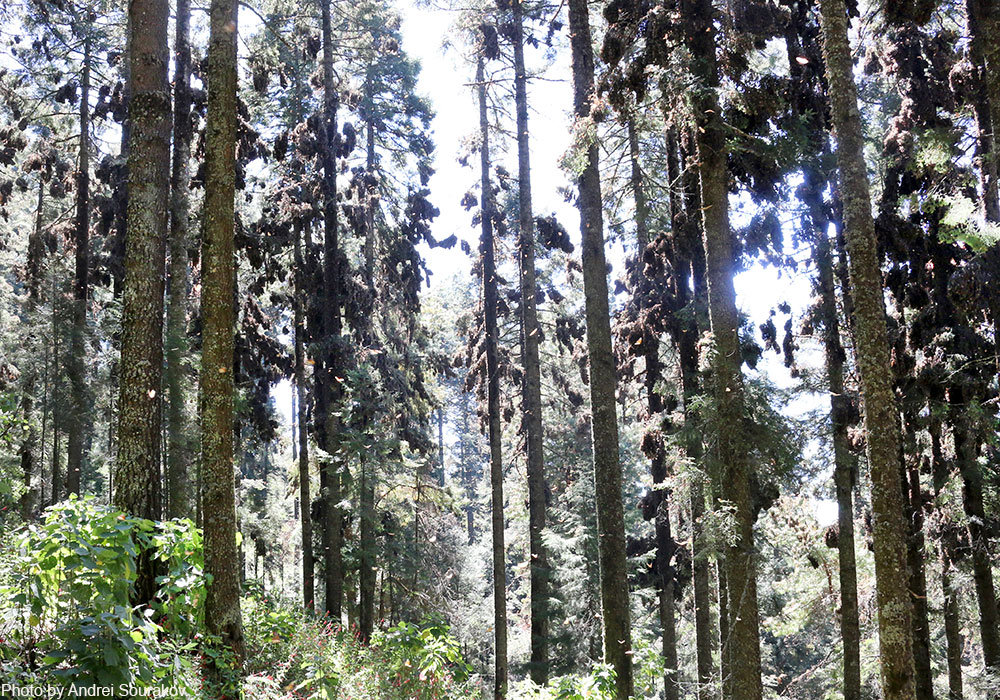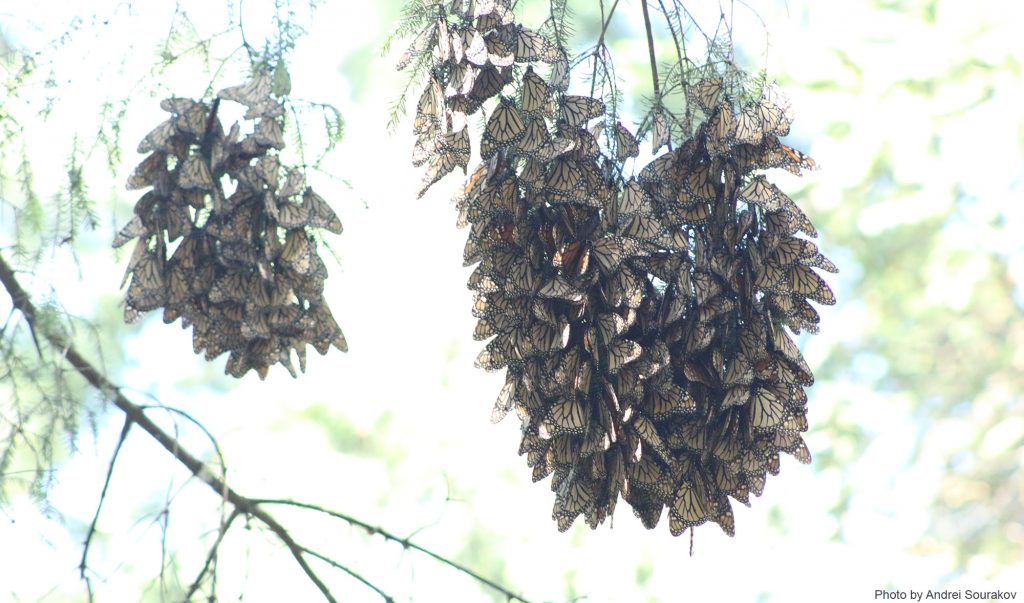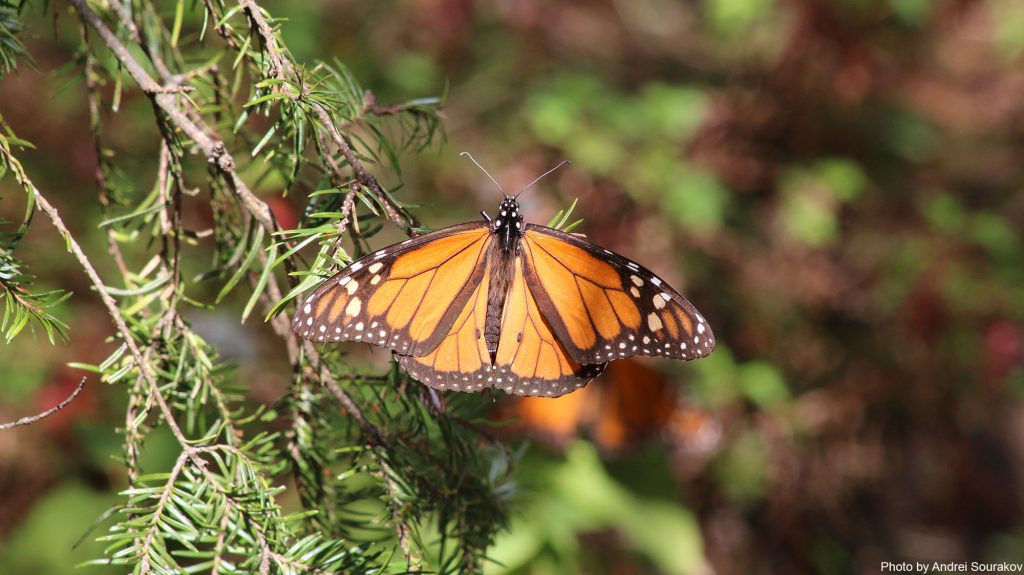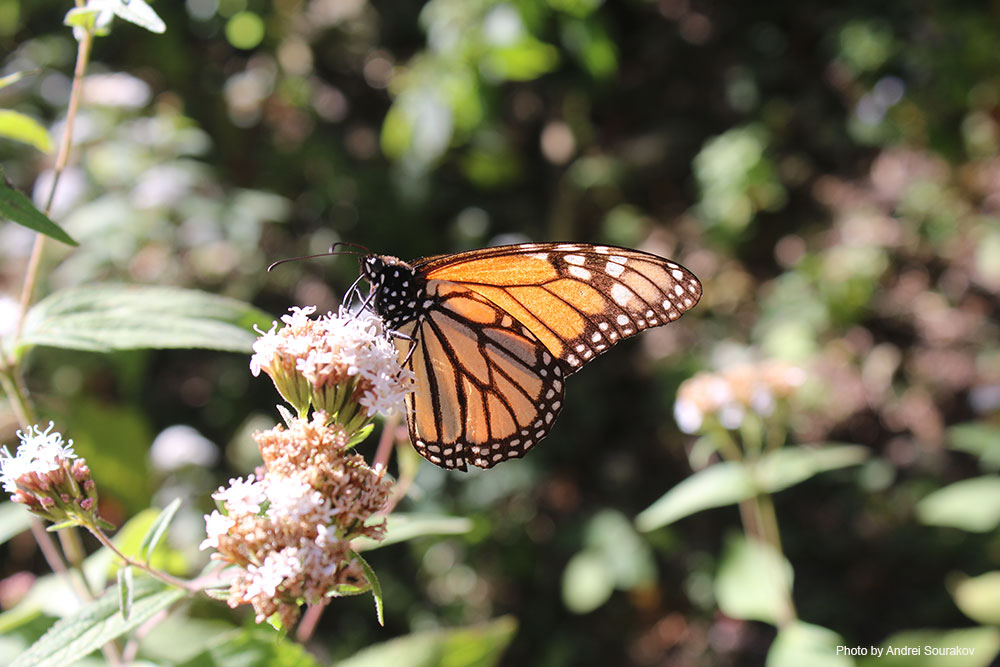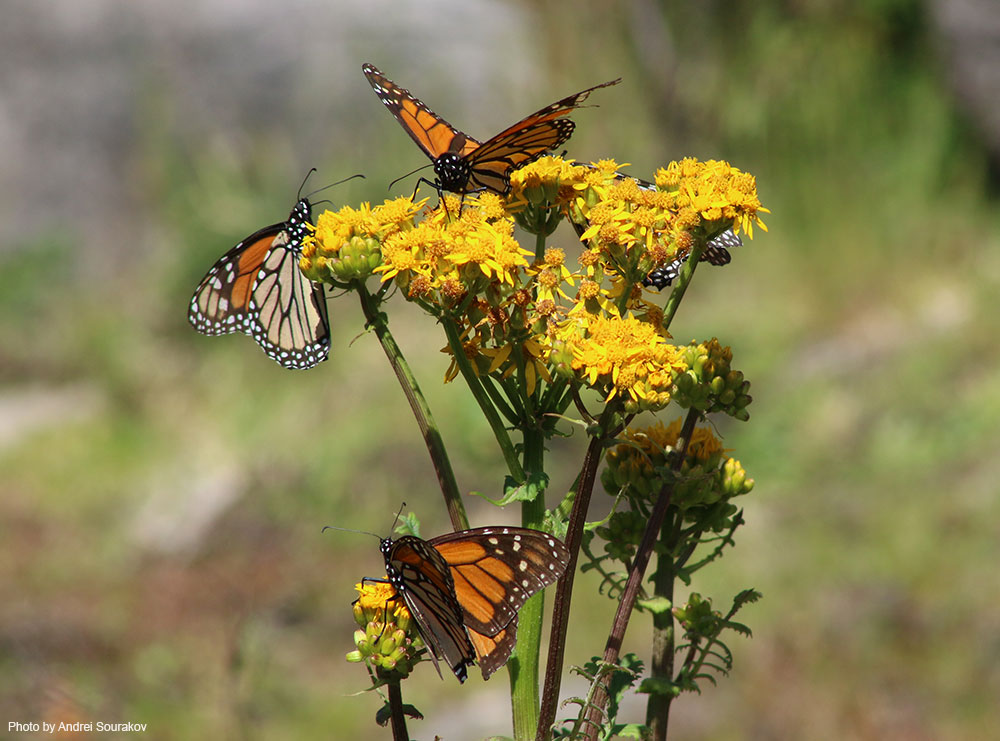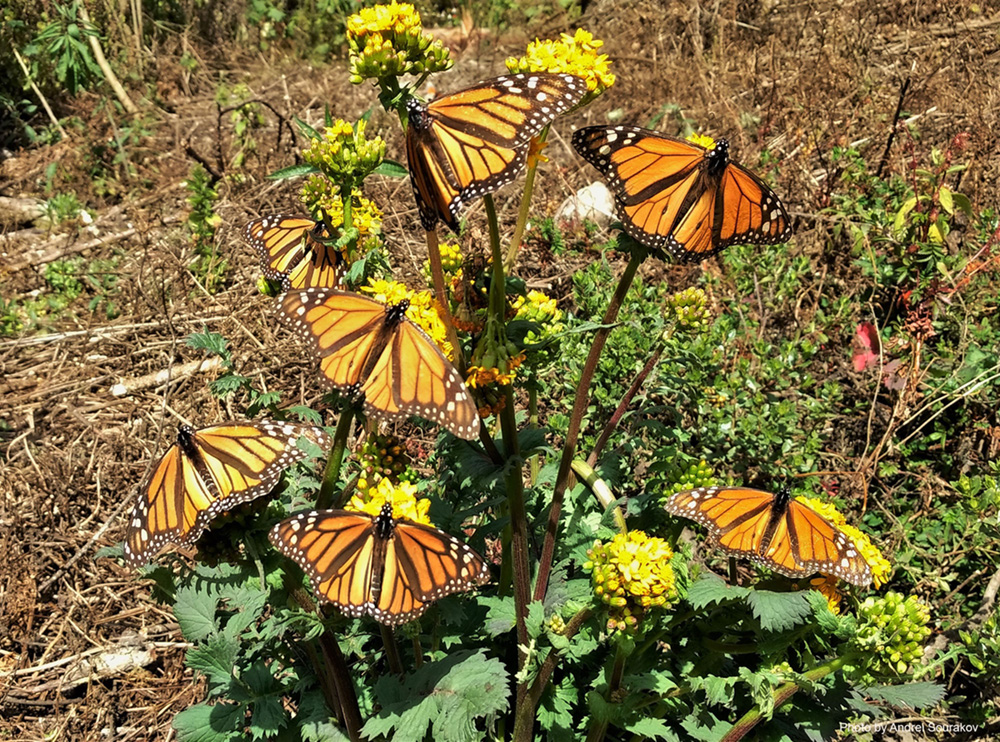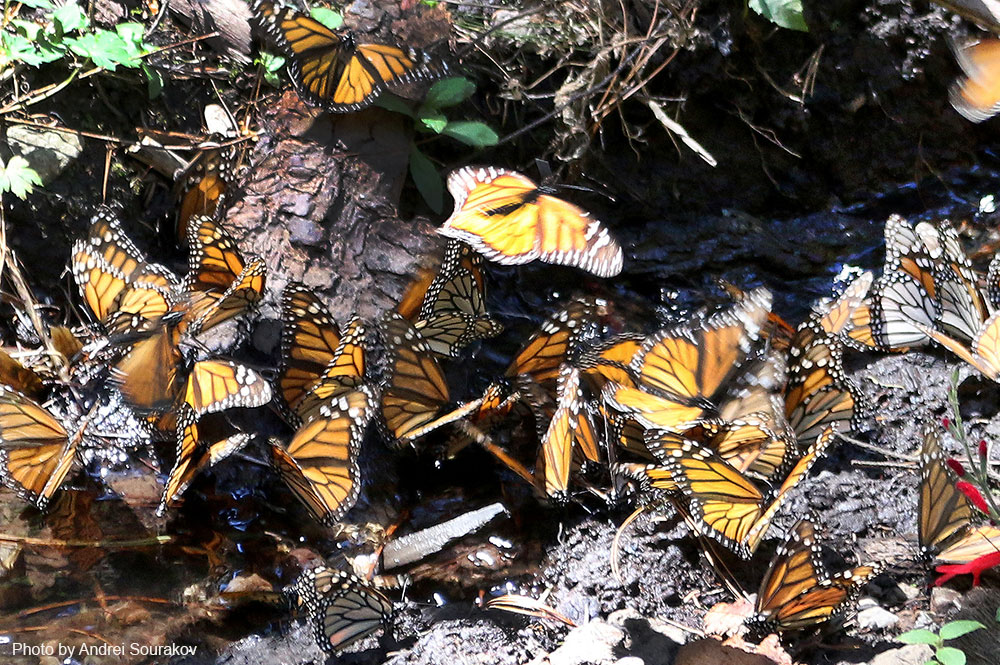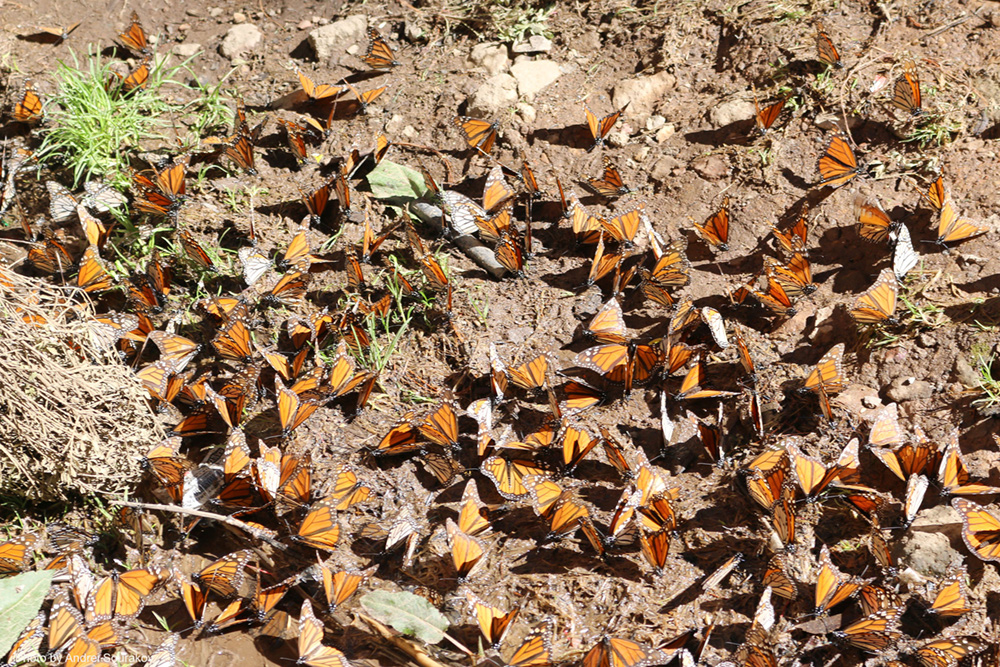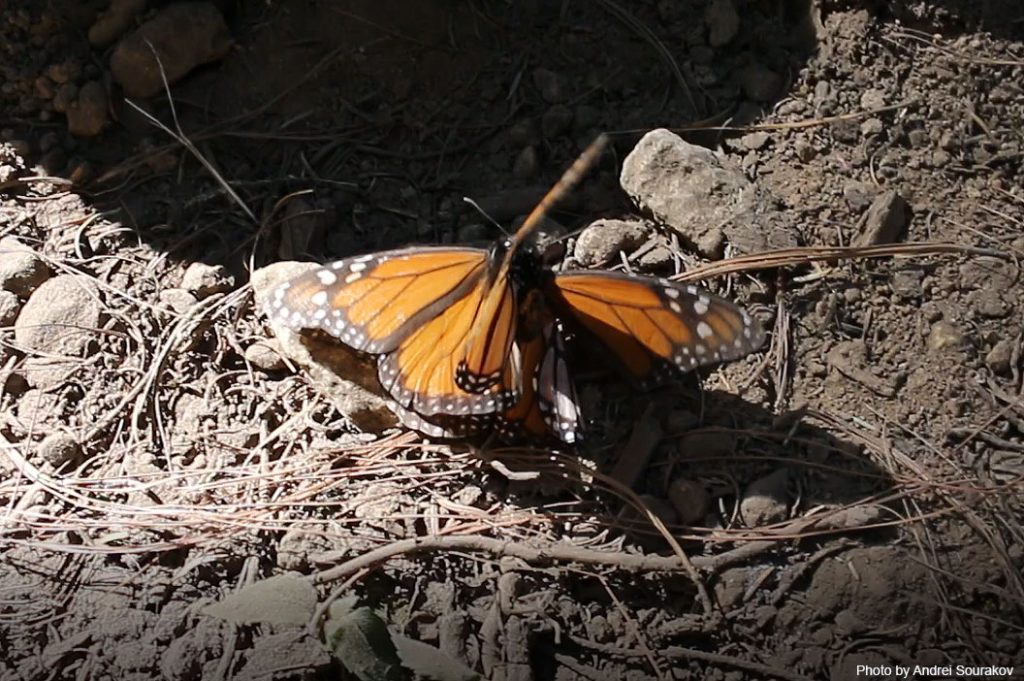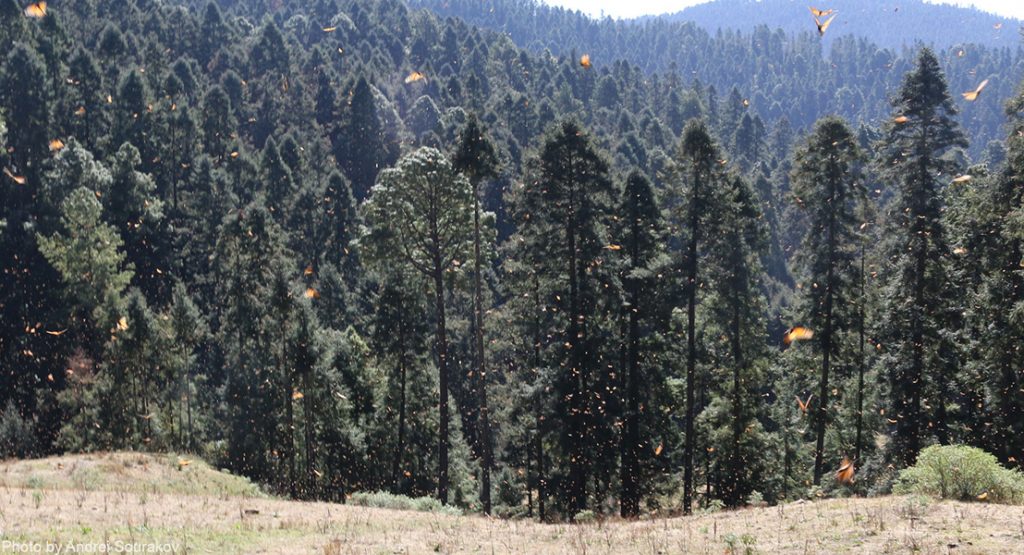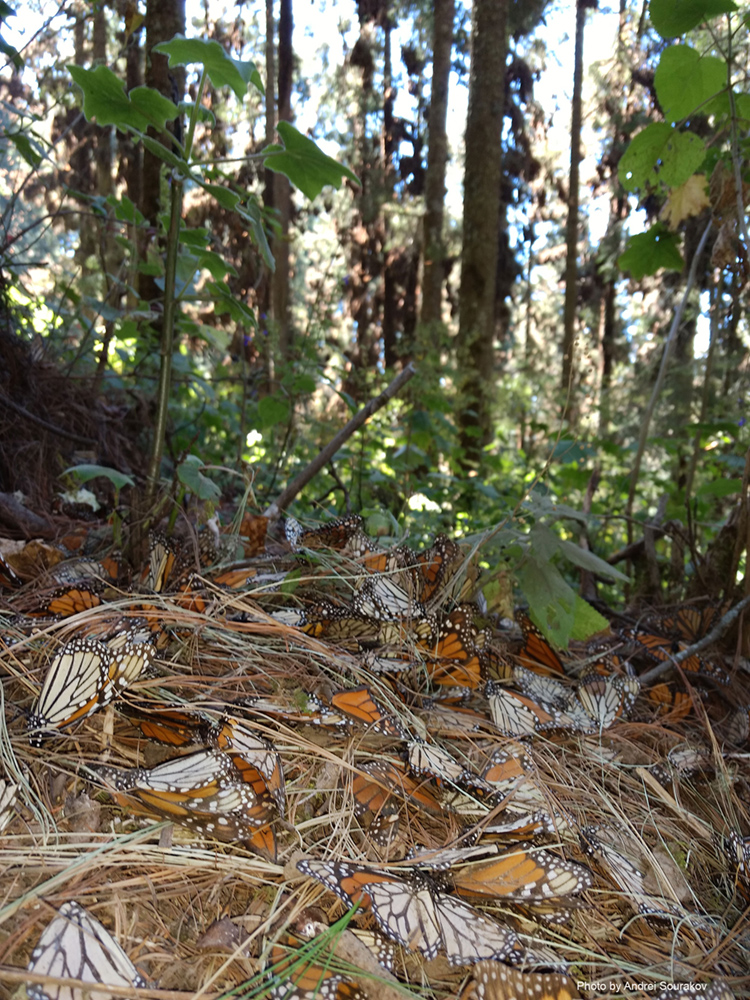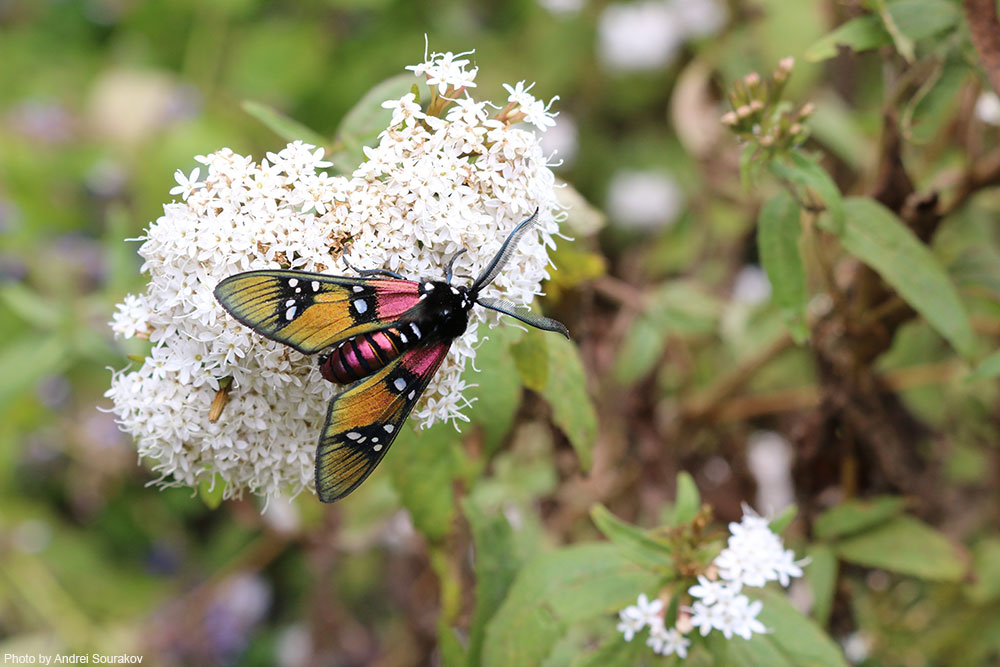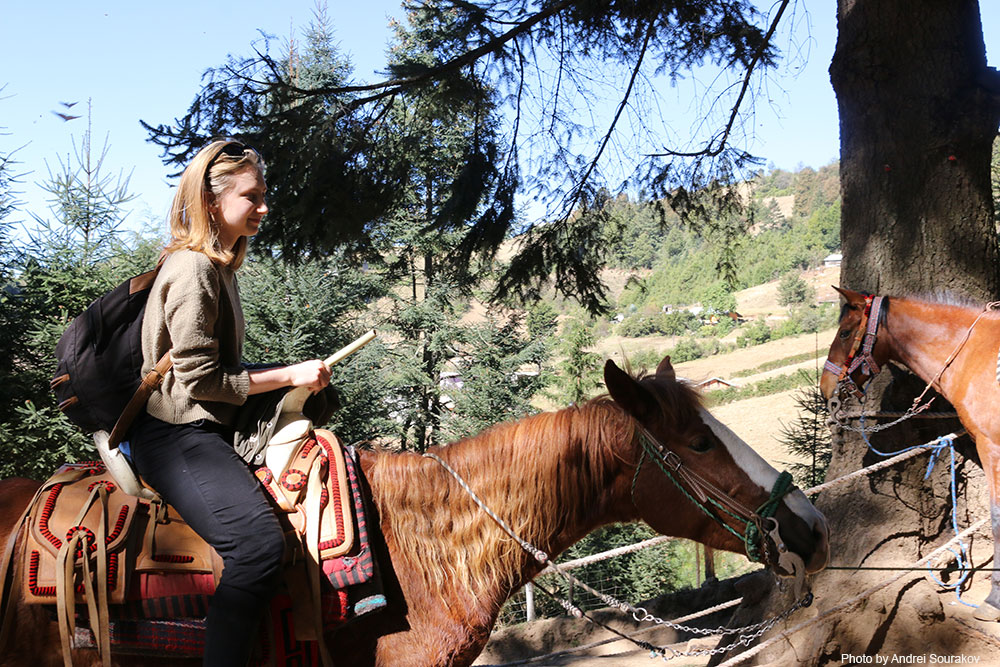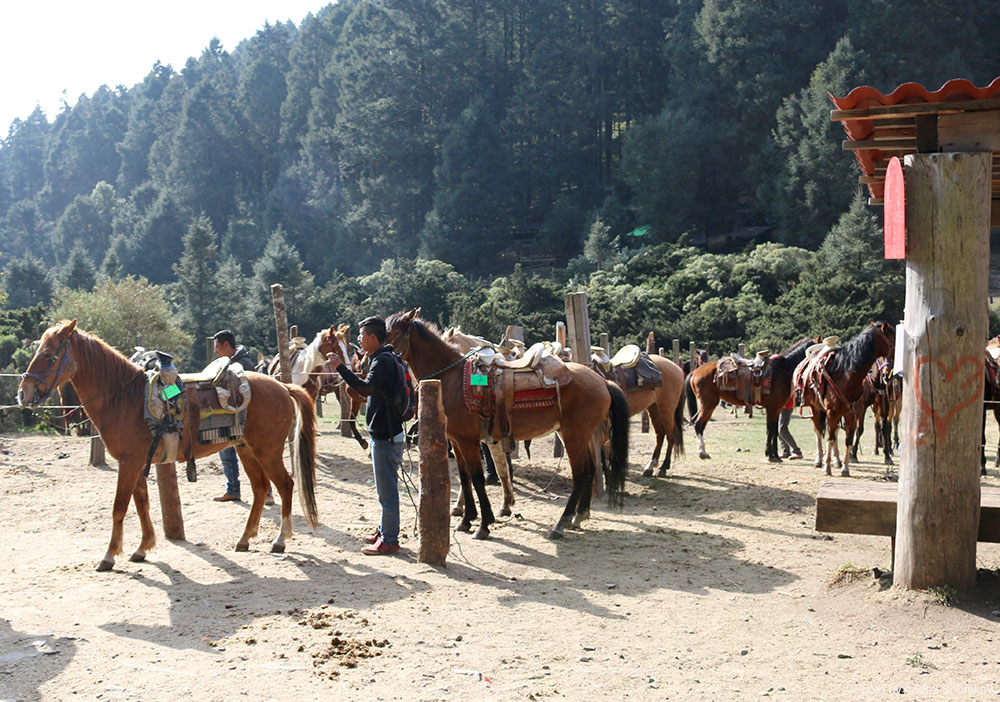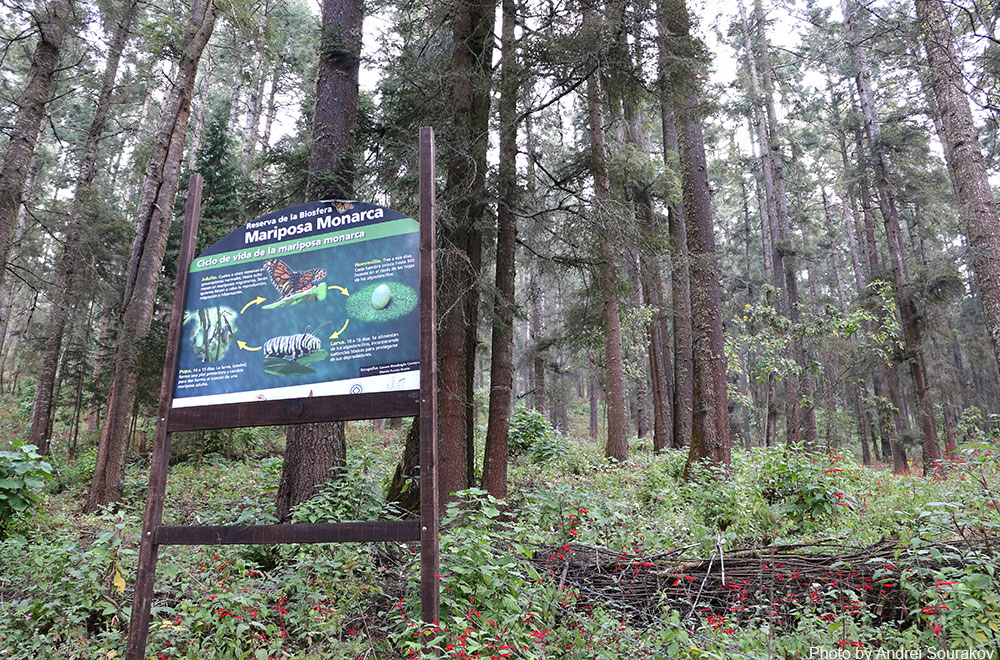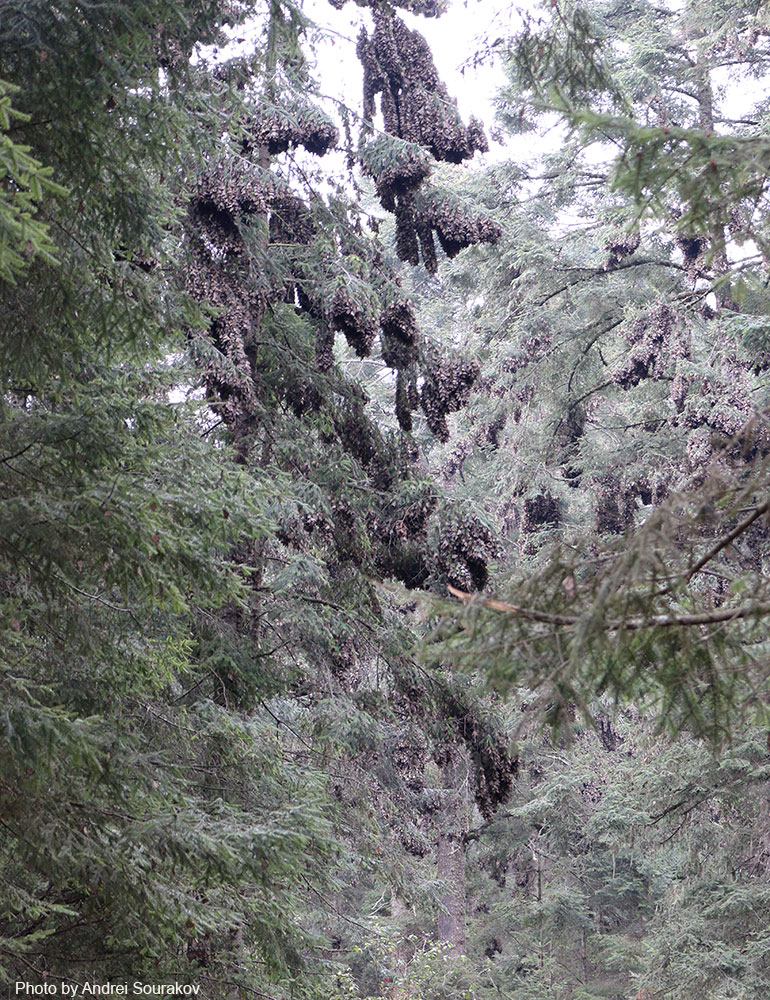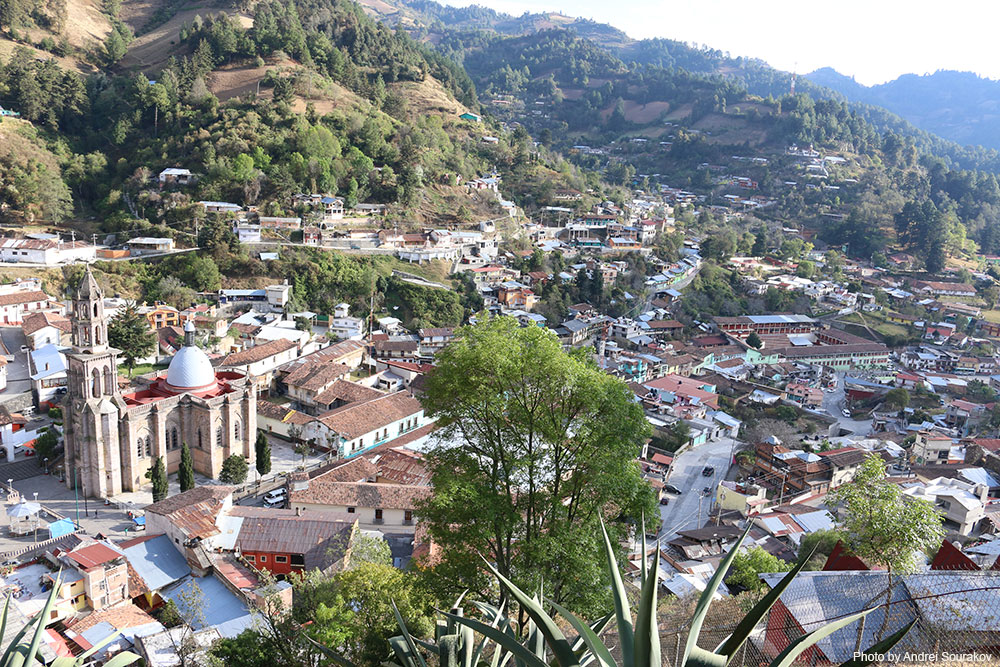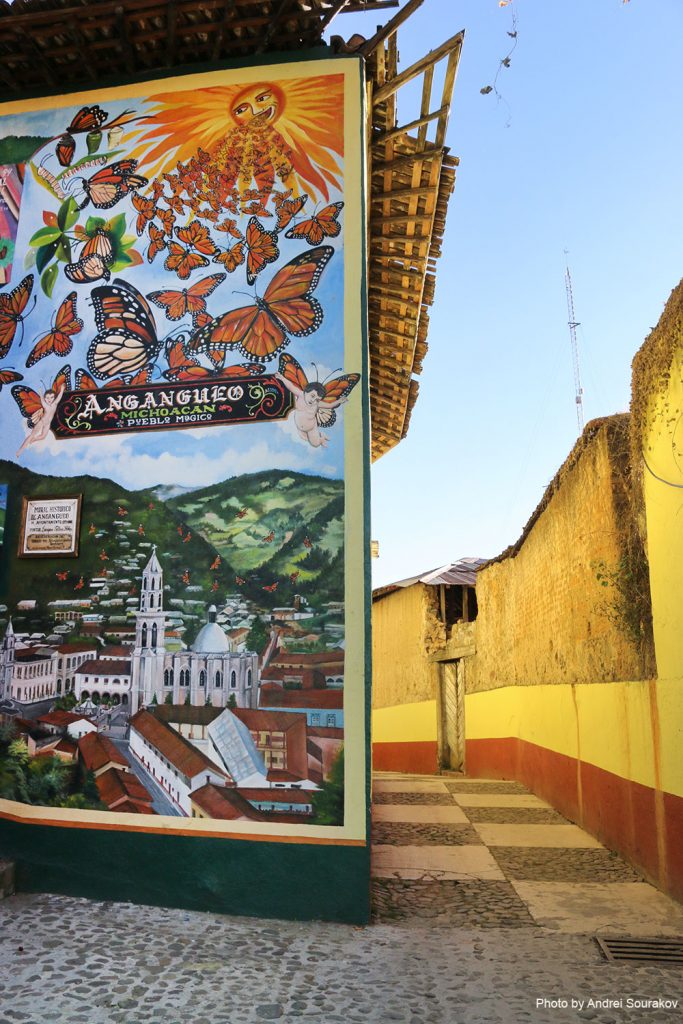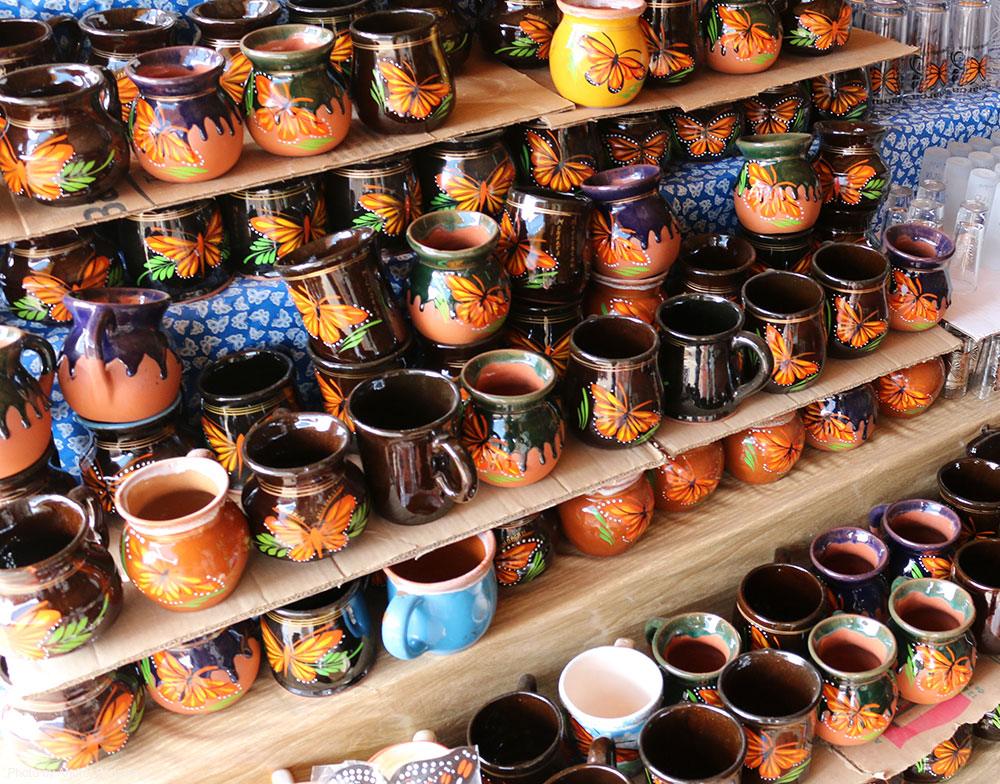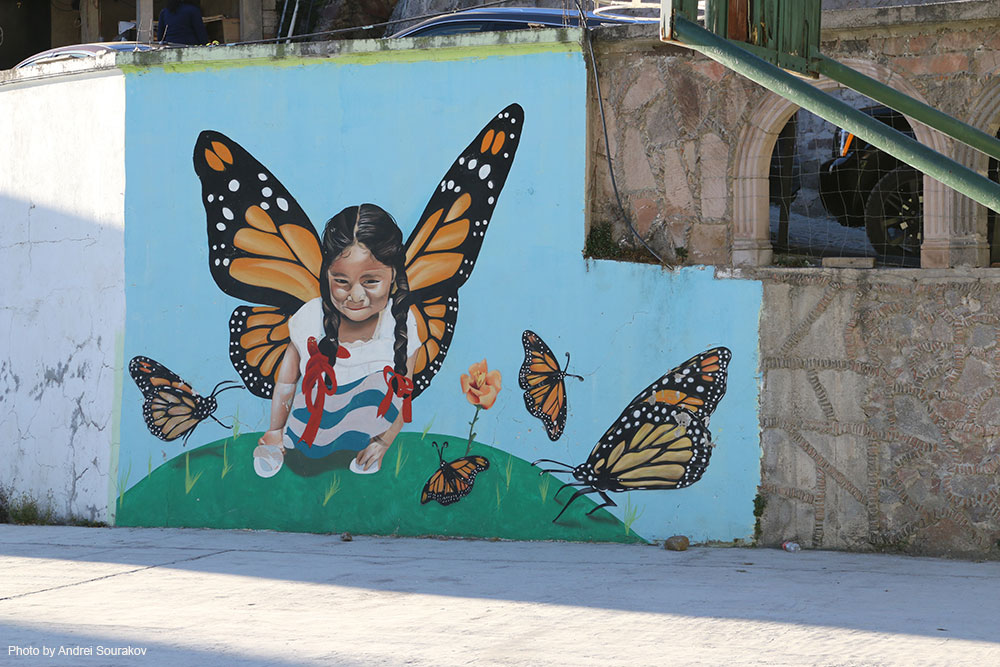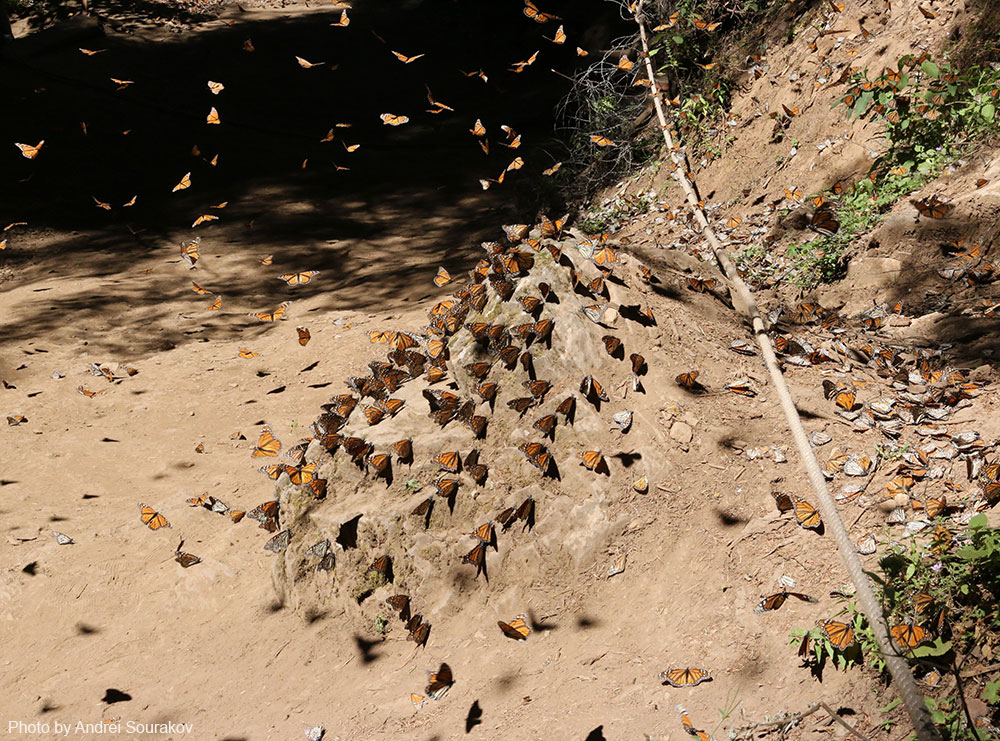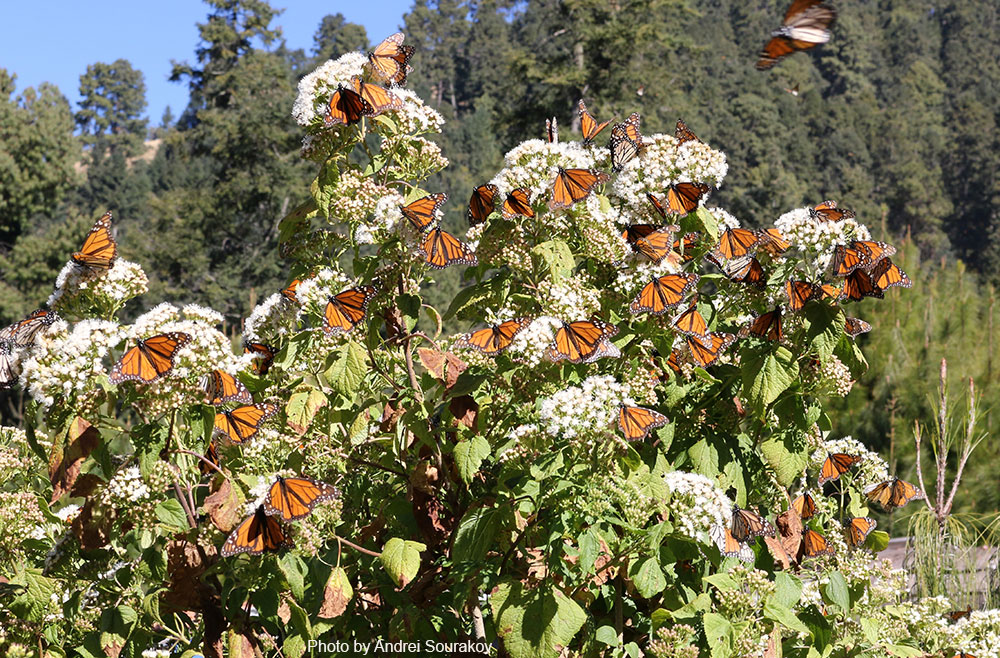The migratory monarch butterfly, Danaus plexippus plexippus, has received much publicity lately, portrayed by the media as a threatened or endangered species. Some of my friends outside of entomological circles, even those who would normally say “a good insect is a dead insect,” have asked me for my opinion on the matter. Recently, I returned from another trip (my fourth) to the monarch overwintering sites in Mexico. In light of the fact that the monarchs are now being considered for possible designation as “federally endangered species,” I thought I’d share some of my observations based on my experiences.
Even before I started regularly visiting Michoacán, I was well familiar with the trends of monarch’s decline, which was marked by the shrinking colonies. Based on observations that span 20 years, from 1994 to 2014, the trend was considered disturbing by some conservationists, but as an entomologist who worked for several years in integrated pest management, I had a slightly different view of these graphs. Insect populations go through dramatic peaks and valleys and, unlike for vertebrates, it is very difficult to pinpoint the reasons for temporary declines. Sometimes years of decline are followed by population peaks that may also be hard to interpret.
My first trip to the colonies was in 2004, when the monarch numbers, according to the above-mentioned graphs, were higher than in the previous six years, and the monarchs filled the air and covered some trees so thoroughly as to obscure their outline. So the trip did not leave me with any sense of potential doom awaiting the migration phenomenon. After a hiatus of 14 years, however, when I led another group to the colonies in February 2018, the experience was in stark contrast to that of 2004. My companions who were there for the first time were thrilled to see millions of butterflies aggregated on trees. It was cold and cloudy, which prevented the monarchs from flying, but occasional sun made the butterflies open their wings, turning monarch-covered brunches from grey to red. Though it is hard to compare the colonies when monarchs are flying and when they are not, the colony appeared to be smaller than 14 years prior.
In February 2019, I led another Florida Museum group to the colonies, and there were more monarchs at the site of El Rosario than many local guides could remember. While I am convinced that anecdotal accounts and memories are not be trusted as scientific evidence, I can confirm that compared to 2018 monarchs were roosting in seemingly thousands of clusters, many of which were huge. The colony at El Rosario is one of the largest and is most visited by tourists. That year, it was quite low down the mountain in comparison to what I’ve seen on the previous visits. While only a small percentage of butterflies were flying, they still engulfed us on all sides, making for a surreal experience for which these sites are famous.
Monarchs visit streams to stay hydrated on warm days and especially so before dispersing from the colonies in February-March. In February 2019, water was readily available in natural and artificial streams and ditches, and monarchs covered it with black-and-orange magic carpets that would lift off and flow in the air downhill along the streams. Mating had begun, and we were rained on by thousands of mating couples that also littered the ground. While mating in non-migratory generations involves rituals typical of other butterflies, for monarchs that have just stepped out of their prolonged celibacy at these overwintering sites, mating is wild and violent. Males tackle not only females but also other males and bring them down to the ground. Induced by low juvenile hormone during the onset of their southward migration, monarchs spend the winter months in reproductive diapause that lasts most of this unusually prolonged generation. The spike in juvenile hormone in February-March returns them to the “normal” cycle when they mate, disperse, lay eggs and die within a month. From there, the egg/caterpillar/pupa/adult cycle repeats itself three times, with monarchs gradually repopulating the northern part of its range, before another migratory generation is triggered.
This February in 2020, our group once again encountered large numbers of monarchs, though they were higher up the mountain in El Rosario than in 2019. The whole colony can move up and down the mountain not only between years but also within a year, depending on the conditions. It seemed that there were more monarchs in Sierra Chincua, the second large colony we normally visit, than there were there the previous two years. Activity was high, with monarchs flying, drinking from puddles and streams and feeding on flowers, but mating was still seen only occasionally, and the dispersal from the colonies that was obvious during the same time in 2019 had not yet commenced. While dispersal from the colonies might depend on sun angle, it is also obviously temperature-dependent, and perhaps other environmental factors are involved in breaking the reproductive diapause.
Conservation Concerns
How should one interpret the rise and fall of monarch numbers at overwintering sites from a conservation and biological point of view? Since insect populations can grow exponentially when unchecked, their numbers from one generation to the next are extremely unpredictable. I like to use the following example in my “Insects and Plants” class when I ask students: “What would happen if every offspring of a single monarch female (which can lay about 600 eggs), lived to survive to adulthood and itself reproduced? What do you think one would observe in a few generations?” It surprises students every time when they realize that should this be the case, in a couple of years, a layer of caterpillars a yard deep would cover the entire Earth. Should they continue to multiply, the caterpillar layer would reach the Moon in about 20 years. What keeps populations stable are numerous factors, from weather-related mortality to predators, parasitoids, and disease. There may be general trends, but from one year to the next and even from one decade to the next, it is difficult to make confident predictions, as the slightest deviation in these factors can have major consequences. Differences in rainfall can change hostplant germination, which is closely tied to the proliferation of larvae. Warmer winter weather can reduce mortality among adult insects, while extreme heat or drought can increase it. Spikes in predators, parasitoids, bacteria and viruses may bring population to near collapse on any given year or even decade, or the opposite can occur. If we have learned anything from pest species of insects and our mostly futile attempts to exterminate them, it is that sometimes we achieve the exact opposite of our intentions, and that it is impossible to predict the future population dynamics of any insect species using population modeling—even the models themselves, unrealistic and oversimplified as they are, behave chaotically.
While monarchs are undoubtedly a very important species culturally both in the USA and Mexico, and we should strive to preserve its migration, listing it as “Endangered” may have the opposite effect of its intended purpose. Monarchs are among the most common and widespread butterflies in the world, and listing such a common species may undermine the Endangered Species Act in the United States, where it has been instrumental in preserving vertebrates. Losing the monarchs in the United States territory as a result of dwindling migration would be very unfortunate, but should this ever happen, there would still be many resident and migratory populations in Central and South America, Hawaii, Australia, and other places. Monarchs, as a species, seem to be very flexible when it comes to their behavior. Their density, fast reproduction, and the widespread nature of their hostplants should provide sufficient genetic variability for them to adapt to the changing environment. As proof of the monarch’s versatility, we now have regular monarch migrations in Australia that established themselves over the course of less than two centuries, during which monarchs adapted to environments very different from those they inhabit in the New World.
All this said, the monarchs, like most other species, are facing some serious challenges. A particular challenge is presented by a rapidly changing climate. If the monarch’s dispersal from the colonies starts too early because of the warmer than normal weather and before their hostplants are available, their migration pattern may change. The warmer temperatures combined with drought may also start depleting their stored fats before they disperse from the colonies. However, listing the monarchs as ‘endangered’ in the United States is not going to eliminate the threat presented by global warming, the threat that is affecting tens of thousands of species, particularly those that depend on montane habitats supported by water from fast-vanishing glaciers.
Today, many companies and land managers are already making efforts directed towards conserving monarchs and other species. This voluntary and government-supported initiatives will hopefully go a longer way than threats of enforcement, which sometimes led to the opposite effect of sabotage and resentment. In Michoacán, local communities are now doing a good job of preserving overwintering sites, but it did not happen right away or smoothly. The reliance on an extraction economy was very strong, and the past efforts of the late Lincoln Brower and other conservationists are paying off there not only because of legal conservation efforts, but also because these communities are invested in monarch conservation and ecotourism.
University of Florida and Monarchs in Mexico
Lincoln P. Brower, was a professor of Zoology at the University of Florida between 1980 and 1997. Brower worked on the monarch’s chemical ecology and the science of its migration and provided many students and postdocs with an opportunity to work on this butterfly. Brower was also behind publicizing overwintering colonies as a remarkable phenomenon of great importance to humanity. Brower campaigned with local and federal-level politicians in Mexico and the United States and managed to convince many that the monarch migration is a remarkable phenomenon worth preserving. He particularly emphasized the threats from deforestation at the overwintering colonies and from the changes in agricultural practices in the US that led to loss of milkweeds. In Mexico, Brower’s efforts succeeded to a great extent. While he passed away in 2018, he is revered by the local community at Sierra Chincua that owns and manages part of the Monarch Butterfly Biosphere Reserve. We saw a sign of this reverence this year — there is a new memorial to Brower in a shape of a butterfly.
Jump-starting the current conservation efforts relied on a partnership between conservationists, the government, and the local people. However, the important lesson from this success is that conservation has been sustained because of the benefits that the monarchs have brought to the local communities through ecotourism. In addition to planting milkweeds and promoting monarchs among school children, the next best thing to do to advance monarch conservation is to visit the monarchs’ overwintering colonies. This was recognized by another former University of Florida Zoology professor, Thomas C. Emmel. Upon his retirement, Emmel had a second career as a founder and director of the McGuire Center for Lepidoptera and Biodiversity. A long-time conservationist, whose efforts to save butterflies from extinction span from Florida to Brazil, Emmel saw the benefits that ecotourism could bring to the monarchs. Already 20 years ago, he began taking groups to Michoacán giving lectures about migration and conservation along the way to a variety of participants. After Tom’s death in 2018, this tradition of promoting monarch ecotourism still continues at the Florida Museum. Mexico is a beautiful and hospitable country, rich in resources, traditions, and cultures, both past and present. Among many values that we share with Mexico are the monarch butterflies, which by their unobstructed annual movement can symbolize the interconnected nature of the world.
